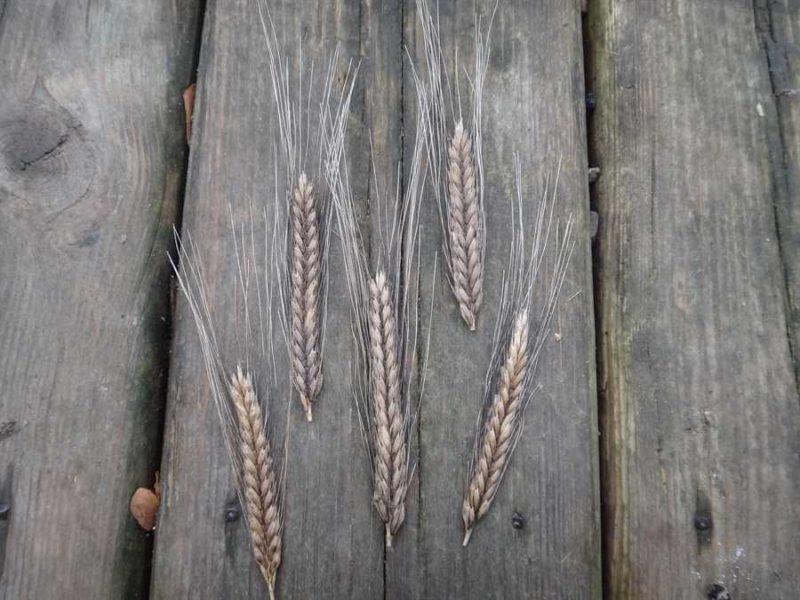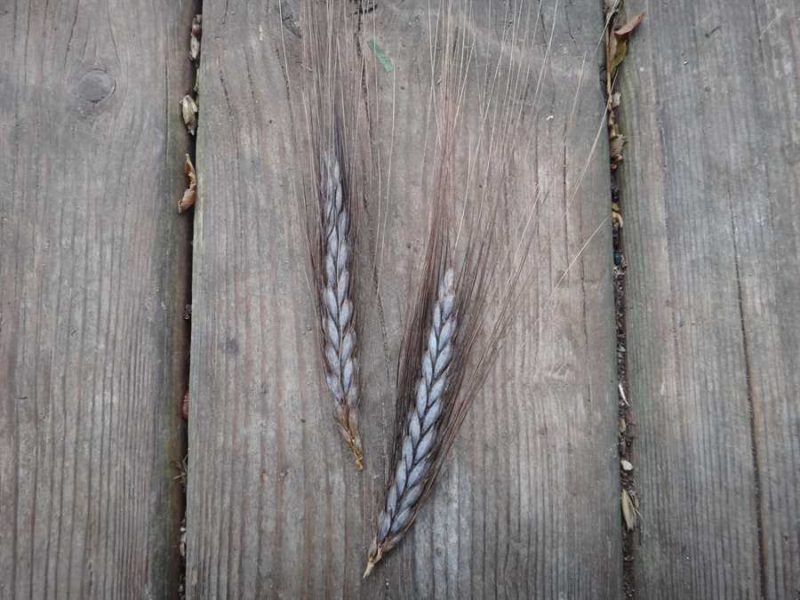(Triticum spp.)
Wheat (Triticum aestivum) is a wonderful grain, grown around the world by just about every bread-eating culture.
Einkorn (Triticum monococcum), emmer (Triticum dicoccum), and spelt (Triticum aestivum var. spelta) are three grains which are considered to be the ancestors of modern bread wheat. All three tend to retain their hulls when threshed, which makes them harder to use for food, since they must be dehulled before eating. Wheat threshes “clean,” that is, it loses its hulls when threshed and can be eaten without needing additional dehulling. Also, in most years wheat will produce more grain per square metre. These advantages led most people to eagerly adopt it when it was developed thousands of years ago. However, the ancient wheat relatives are now experiencing a bit of a resurgence because some people who are sensitive to wheat have found that they can eat its ancient relatives without ill effects. This benefit may be augmented by sourdough baking rather than baking with regular yeast.
If you are a straw weaver, these grains are often beautiful and might be worth trying purely as ornamentals.
-
- Out of Stock
Black einkorn
- $4.00
- (Triticum monococcum) A tall variety with long, thin heads which darken at maturity. 130 days to maturity. 150 seeds/packet.
- Read more
-
-
- Out of Stock
Blé dur Arcour einkorn
- $4.00
- (Triticum monococcum) A variety with short, wide heads, Blé dur Arcour is somewhat unique among the einkorns because its hulls are looser; some come off when threshing (threshing by rubbing is more effective than by hitting). This means that it has considerably more potential as a food crop for the home gardener than most einkorns. A downside of this variety is that it resents rain when it nears maturity and…
- Read more
-
-
Maris Wigeon wheat
- $4.00
- (Triticum aestivum) A fall-planted wheat released in 1964 by the Plant Breeding Institute in the UK. Interestingly, it was apparently selected for its straw for use as roof thatch, but it also has good grain quality. The first half of its name comes from Maris Lane in Trumpington, Cambridgeshire where the PBI had its headquarters; the lane’s name comes from the Maris family, who farmed the land next to it…
- Add to cart
-
Spelt
- $4.00
- (Triticum aestivum var. spelta) I don’t have a varietal name for this spelt; we started to grow it before I started worrying about that. It does well for us. We plant in fall; it should emerge before freezing forces it into dormancy, then wait all winter and begin growing rapidly in spring. When mature, it will be 3-4’ tall and a beautiful gold. The straw, by the way, is very…
- Add to cart
-
- Out of Stock
Utrecht Blue emmer
- $4.00
- (Triticum dicoccum) Heads with long awns turn a lovely grey-blue as they mature. Probably the most beautiful grain we grow. Named for Utrecht in the Netherlands, where some say it was cultivated into the early 1900s. However, I find this story curious: why would the Dutch have grown this hulled grain when easier-to-use hulless wheats were available? I have heard that emmer straw makes superior thatch, and the Netherlands has…
- Read more
-






